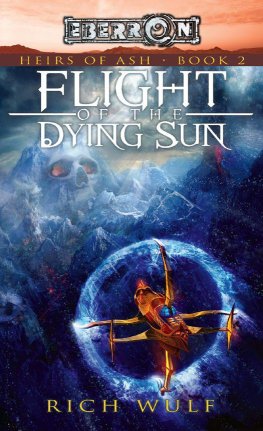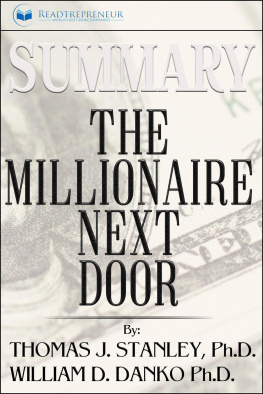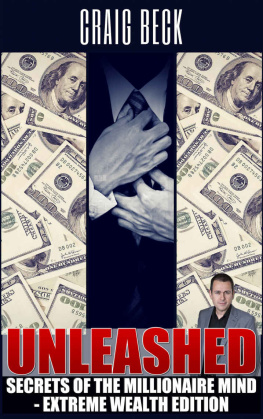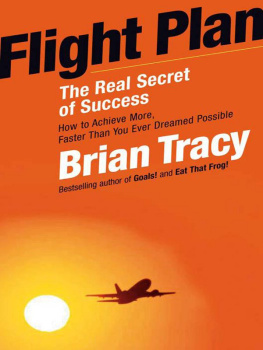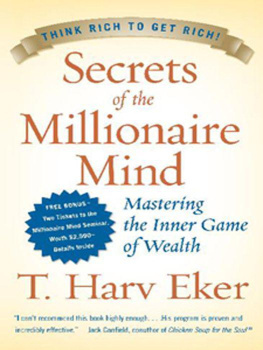STUDIES IN SOCIAL INEQUALITY
This book series is devoted to examining poverty and inequality in its many forms, including the takeoff in economic inequality, increasing spatial segregation, and ongoing changes in gender, racial, and ethnic inequality.
THE MYTH OF MILLIONAIRE TAX FLIGHT
How Place Still Matters for the Rich
CRISTOBAL YOUNG
STANFORD UNIVERSITY PRESS
STANFORD, CALIFORNIA
Stanford University Press
Stanford, California
2018 by the Board of Trustees of the Leland Stanford Junior University. All rights reserved.
No part of this book may be reproduced or transmitted in any form or by any means, electronic or mechanical, including photocopying and recording, or in any information storage or retrieval system without the prior written permission of Stanford University Press.
Printed in the United States of America on acid-free, archival-quality paper
Library of Congress Cataloging-in-Publication Data
Names: Young, Cristobal, author.
Title: The myth of millionaire tax flight : how place still matters for the rich / Cristobal Young.
Description: Stanford, California : Stanford University Press, 2018. | Series: Studies in social inequality | Includes bibliographical references and index.
Identifiers: LCCN 2017015547 (print) | LCCN 2017020482 (ebook) | ISBN 9781503603813 (e-book) | ISBN 9781503601147 (cloth : alk. paper) | ISBN 9781503603806 (pbk. : alk. paper)
Subjects: LCSH: Rich peopleTaxationUnited States. | Migration, InternalUnited States. | Place attachmentUnited States. | Rich peopleTaxation. | Tax havens. | Emigration and immigration. | Place attachment.
Classification: LCC HJ4653.R6 (ebook) | LCC HJ4653.R6 Y68 2017 (print) | DDC 336.20086/210973dc23
LC record available at https://lccn.loc.gov/2017015547
Cover design: Preston Thomas, Cadence Design
Typeset by Bruce Lundquist in 10/15 Minion Pro
Table of Contents
List of Figures
Acknowledgments
Writing a book is to live a life absorbed in writing. I have been fortunate to have exceptional companions and collaborators in this task. One of the central themes of the book is that no accomplishment is an individual acteverything we do is a joint product, and all our work is the result of team production. And every so often, we have the chance to reflect on, honor, and thank those who helped us achieve our best work. It is a pleasure to do so here.
I have been studying and writing about millionaire migration for many years. But I only began writing this book while teaching a third-year paper seminar at Stanford in the fall of 2015. This course made me responsible for twelve graduate students, and I pushed them hard to do their best in writing weekly memos and in developing the broader vision of their projects. I soon came to want the same demands and discipline placed on me and reached out for help. My wife Patricia became the patient but demanding reader of my own weekly memos. I also reached out to my colleagues Alice Goffman and Sarah Quinn, and together we formed a book-writing club that kept the deadlines real and the feedback insightful. So began a year of intensive writing.
The initial project of millionaire migration began in collaboration with Charles Varner back in 2008. Charles was my colleague in sociology at Princeton and is now executive director of the Stanford Center on Poverty and Inequality. We have done far more together than I ever could have accomplished alone. Charles is a true scientist and a relentless voice for diligence. We shared a vision of science and a conviction of purpose in our work. Our progress was slow sometimesbecause we had a lot to learn, felt a deep responsibility to get it right, and endlessly triple-checked our results. It is hard to imagine having a better research partner in this project. Our years of working together deeply inform this book. I thank him for every bit of energy he has given to our work.
I am also indebted to Ithai Lurie and Rich Prisinzano at the U.S. Department of the Treasury, who curated my access to the IRS tax return data. The confidential tax returns of American citizens provide the core empirical foundation for this book, especially the 45 million tax returns of the richest U.S. citizens over more than a decade. Legally, I have no access to the raw tax return data, and I cannot even enter the building where these data are housed. These data are highly sensitive and deserve careful protections. Over several years, Ithai and Rich made these data available remotely in analytical results. I sent them statistical code, and they sent back statistical findings. This may sound like an easy process, but it required tremendous patience from everyone. A missing semicolon can render well-designed code useless and hard to debug. Statistical code sent by e-mail is hard to write, and hard to implement, with error sources that are hard to guess at. There were times when all of us wondered whether this collaboration was worth the painstaking effort it required. But it was, and I gratefully thank Ithai and Rich for the years they put into this project. I would gladly do it all over again for what has been learned and hope that the tax data will continue to be available to scholars with important questions to ask.
Maddy Young was my graduate research assistant while writing this book, and it was a privilege to have her energy and commitment to the project. She helped with the research and data collection but was soon promoted to book editor. Maddy has a piercing eye for clarity and detail, combined with a kindness of form, that made me eager to read her feedback and questions. I also had excellent research assistance from Katharina Roesler, Andrew Granato, and Erin Cumberworth. Their assistance has turned what could have been a long, hard slog into an exciting process of discovery. I thank each of them for their contributions.
Many people over the years have shared their thoughts, feedback, and input on this project, including Woody Powell, Bruce Carruthers, Mark Granovetter, Mitchell Stevens, Monica Prasad, Emmanuel Saez, Mike Hout, David Grusky, Jeff Manza, Shamus Khan, Paul Starr, David Pedulla, Marty Gilens, Eric Schwartz, Emily Erikson, Pablo Mitnik, Isaac Martin, Dan Lichter, Philip Morgan, Deirdre Bloome, Jerald Herting, Emilio Zagheni, Christof Brandtner, Jennifer Hill, Aaron Horvath, Sarah Thbaud, Mark Mizruchi, Filiz Garip, and Gabriel Rossman. At Stanford, I have enjoyed a community of scholars and supporters including Shelley Correll, Michelle Jackson, Toms Jimnez, Michael Rosenfeld, Paolo Parigi, Aliya Saperstein, Amir Goldberg, and Corey Fields. I am grateful to all of you for your friendship and for the many small and kind ways you helped make both work and life better.
From Princeton University, where I first began this work, I want to thank the people who helped give me the strongest possible start, including Paul DiMaggio, Douglas Massey, Martin Ruef, Viviana Zelizer, Bruce Western, Scott Lynch, and Robert Wuthnow. Im thankful for their support and encouragement and miss the many great conversations we had.
At Stanford University Press, I thank Paula England and Kate Wahl for their support and confidence in the book project. I also thank anonymous reviewers for their excellent feedback on both the initial proposal and the submitted manuscript.
Finally, my wife Patricia has been my companion in life, love, and scholarship for more than fifteen years. Few ideas are distilled in my mind without Patricias guidance and filter. Few parts of my life are meaningful without her presence. She is the center of my life, and my anchor. I dedicate this book to her.
Millionaire Taxes in a World with Few Borders
Next page

